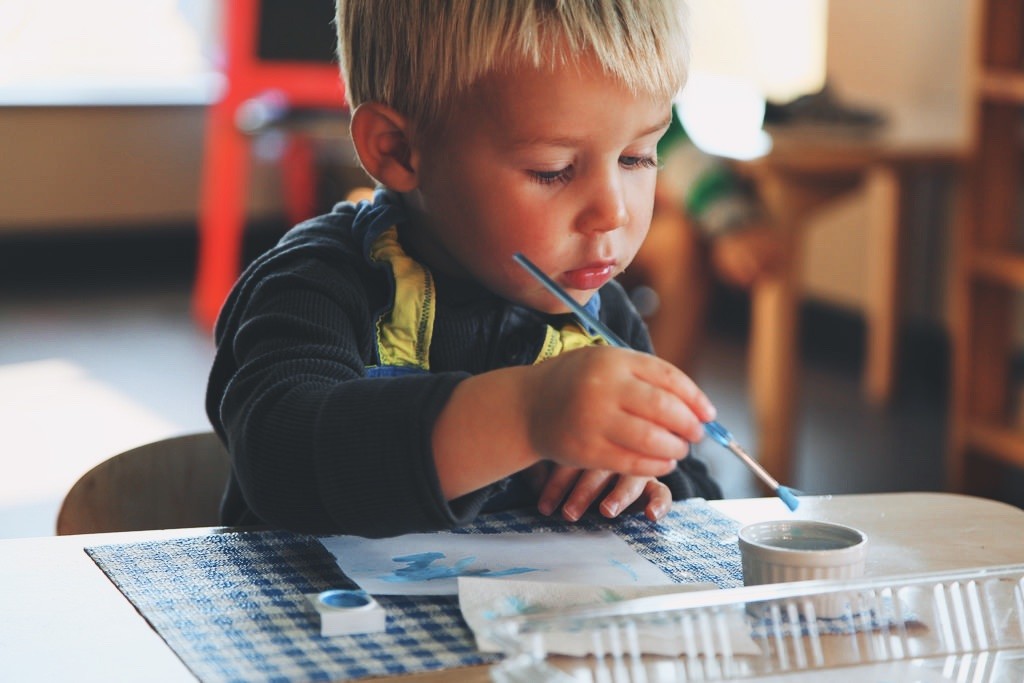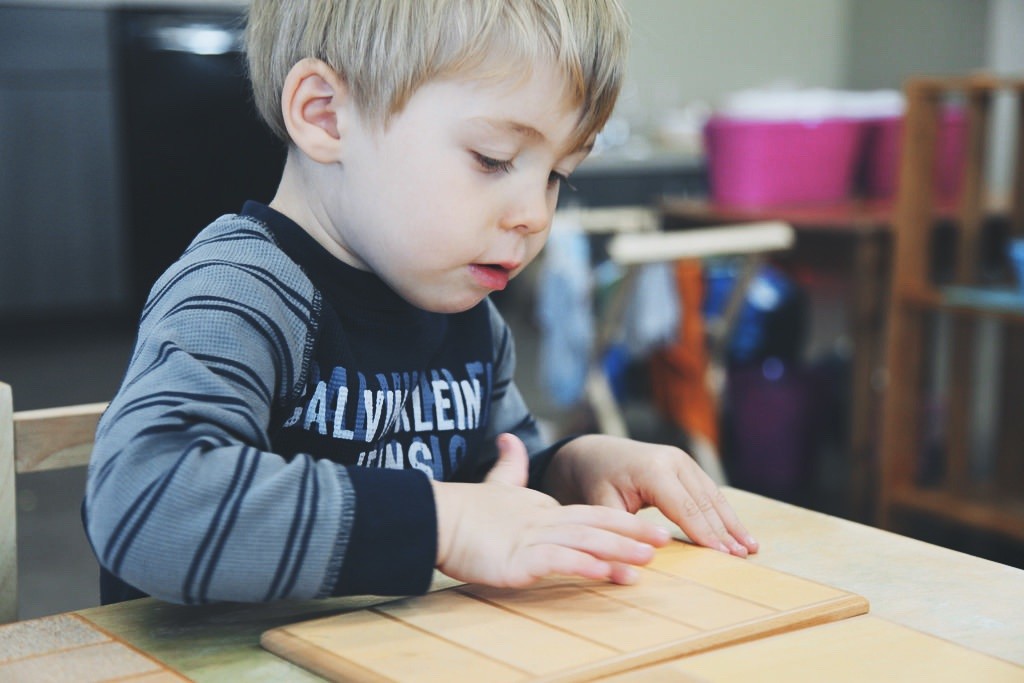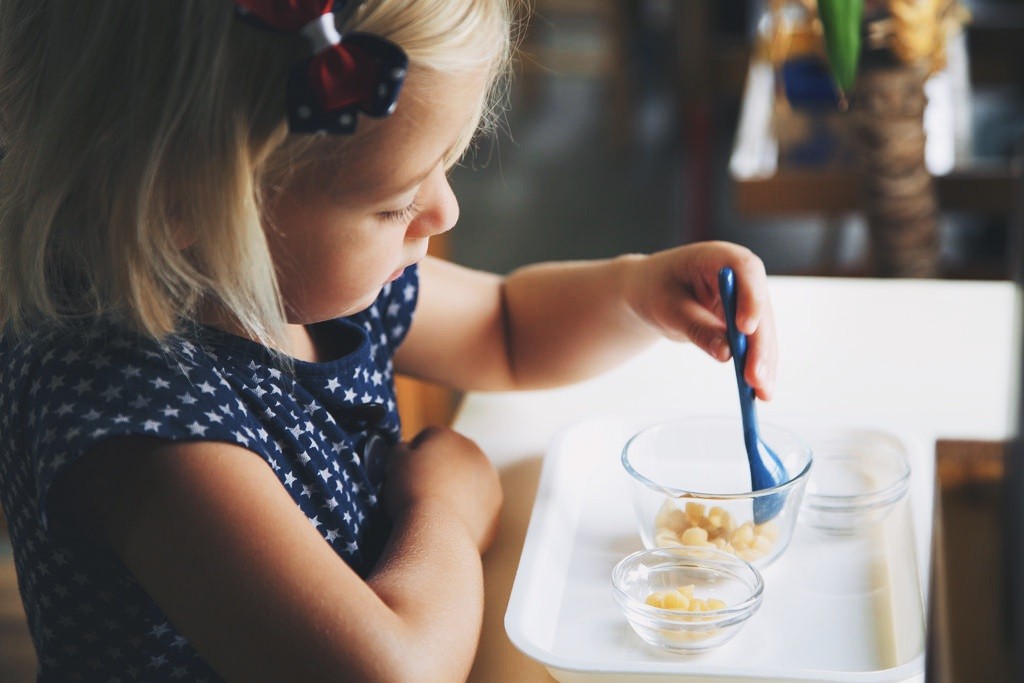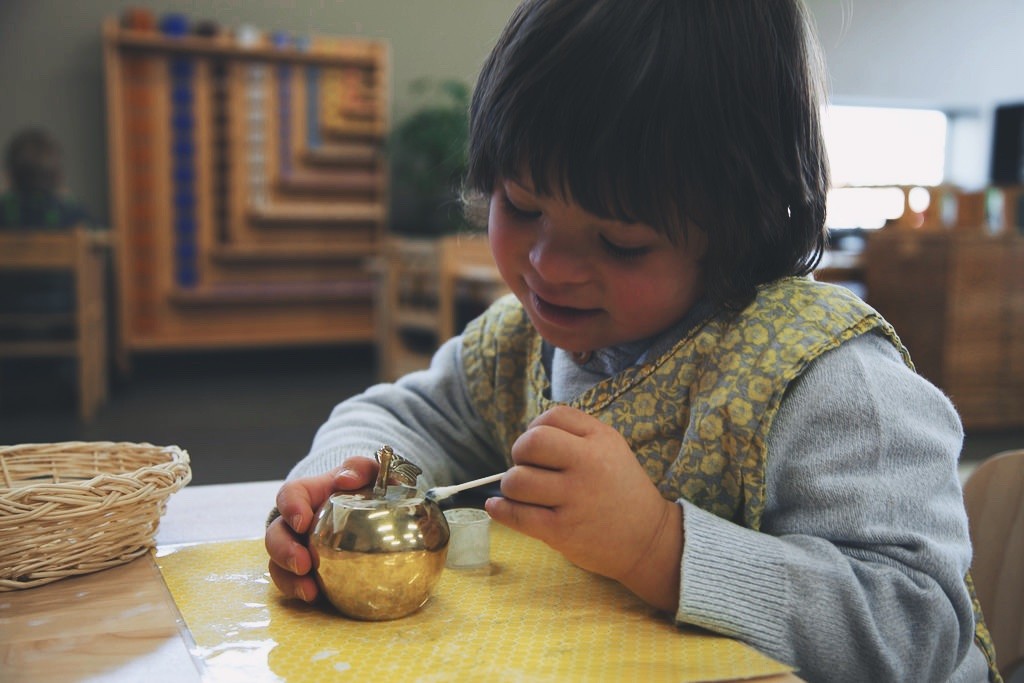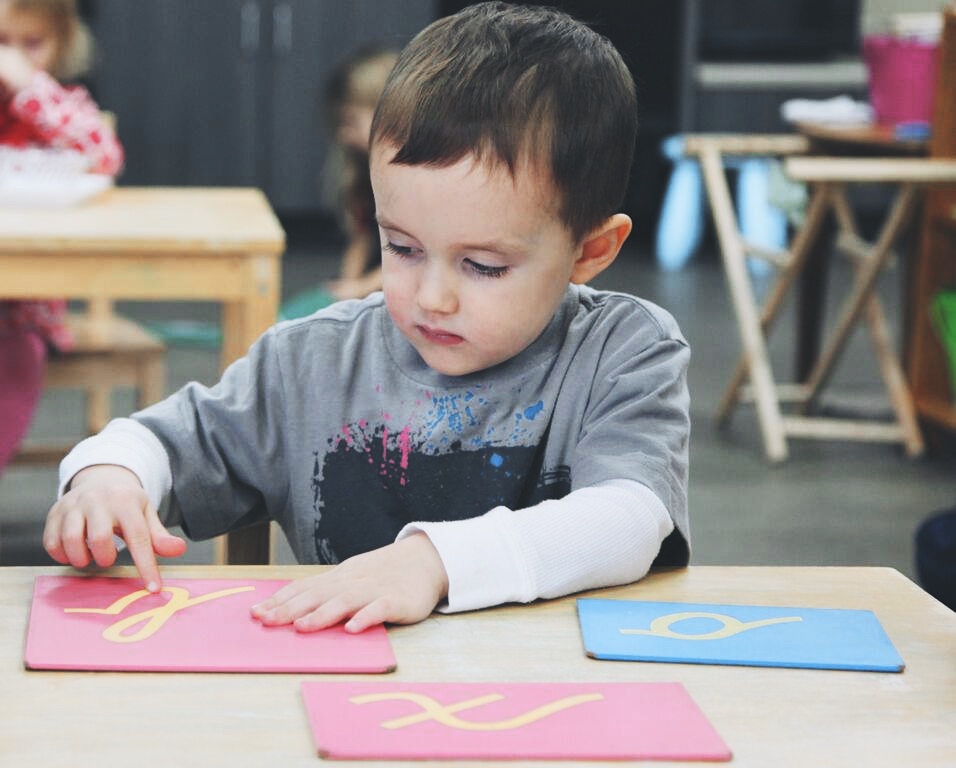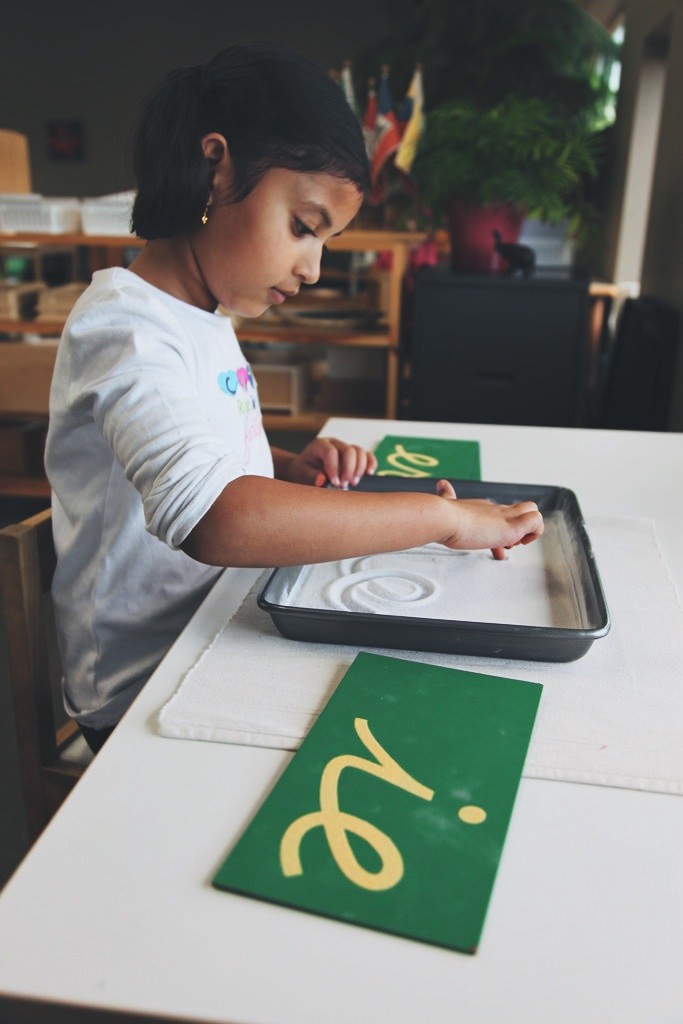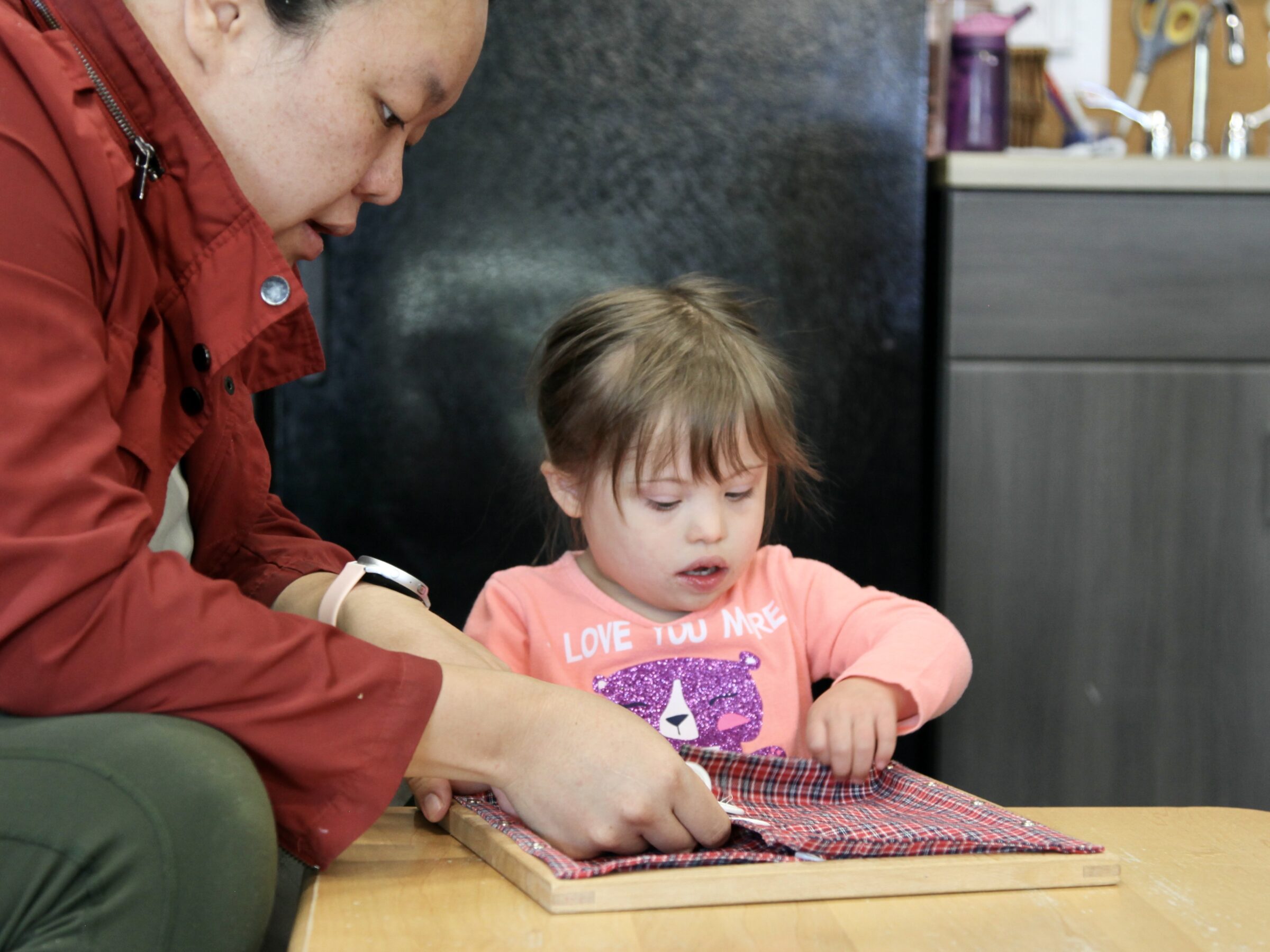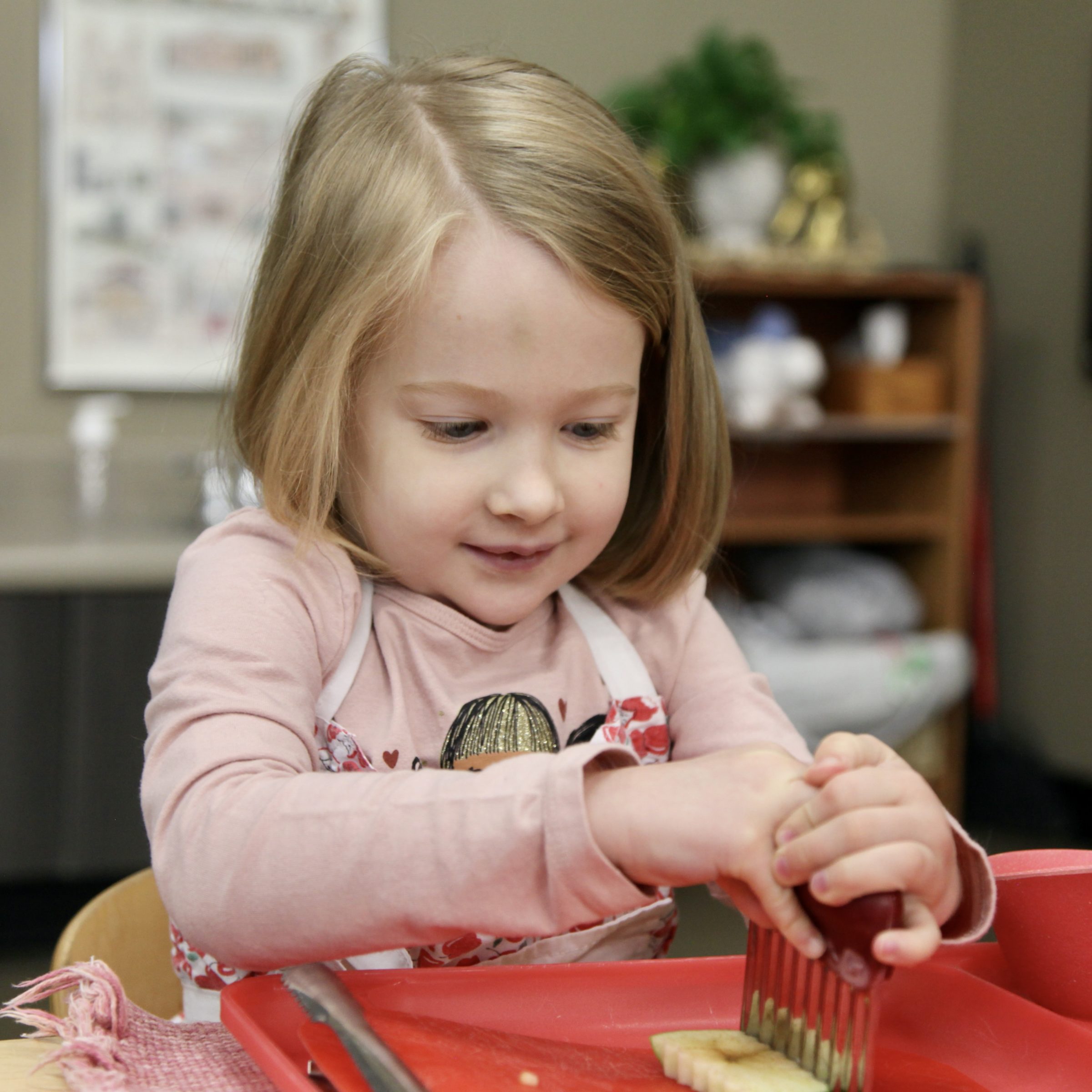Preparing the Hand
Thoughts & Reflections
In the Montessori classroom, the child is preparing the hand for handwriting even before trying to write their name. See some of that progression here.
From her very first day, and her very first material, the child is constantly using her hand, refining fine motor control.
As a child’s manual dexterity develops, they are able to control tools, such as a paintbrush. We model using these tools with the same hand movement the child will use with a pencil.
Even the youngest children sew. This requires coordination, patience, and hand strength, all skills they will use to write.

In the Primary classroom, knobs, which have been present from the earliest days in the Toddler classroom, are getting progressively smaller. The easiest, most natural way for a child to grasp these small knobs is the same as grasping a pencil.
Gently tracing a rough gradation of sandpaper prepares the child’s nerves for the more precise tracing of Sandpaper Letters
Spooning is an active way to engage the hand in movements, while grasping the spoon in the same manner as a pencil. This promotes coordination of fine movements.
The Cylinder Blocks provide repetition and opportunities for coordination, while engaging the fingers.
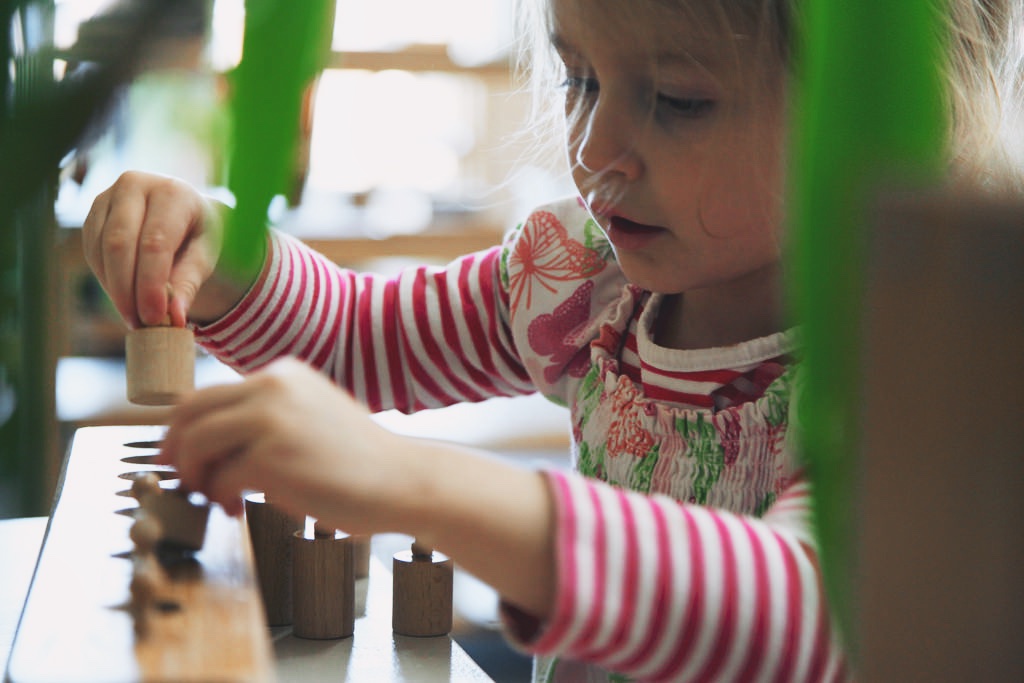
Polishing involves a small, pencil-like tool for applying polish, in this case, a cotton swab. Drawing and coloring will use this same movement, engage these same muscles.
Though extensive practice with the Cylinder Block, the child hones hand preference, and the pencil grasp becomes second nature as muscle memory.
All that practice with sandpaper is so valuable — the child carefully traces Sandpaper Letters. The nerves in their hand provide feedback to the brain of precise tracing, and the motor movement matches visual input.
Finally, we use a pencil! Though not exactly for writing, but for creating designs and careful tracing with the Metal Insets. Putting pencil to paper is immensely satisfying, and sparks a creative flame.
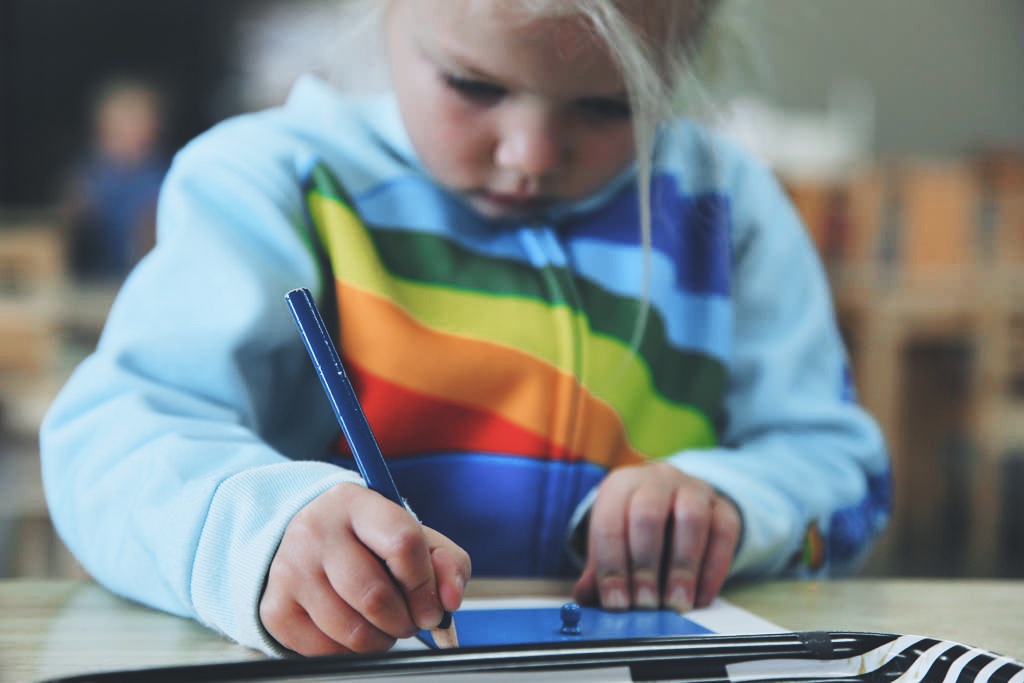
Sometimes trying to write letters with a pencil on a piece of paper can be frustrating. The letters might not turn out exactly as you expected, and the not-yet-perfect letters blink back at the child who so wants to get it just right. The Sand Tray is an impermanent way to practice, and even perfect letters or words are only temporary, encouraging Friendliness with Error. The tray is also oversized, much larger than writing on a small line, so all the muscles of the arm can work in coordination to create the desired letters.
And, just like that, you’re writing. The concentration is no less strong than it was when the child was 15 months old, grasping a large knob, but the movements are smaller, more coordinated. This writing is satisfying, not discouraging, and small errors only serve to delight the child in honing their beautiful handwriting.
The path is long and arduous, but so gratifying.
Written by:
Charlotte Snyder


